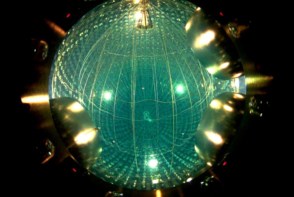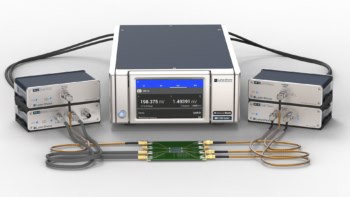
An effect that normally gets in the way of the magnetic trapping of atoms has been harnessed to create a new method for measuring pressure in ultrahigh vacuum (UHV) systems. Stephen Eckel, Daniel Barker, Julia Scherschligt, Jim Fedchak and colleagues at the US National Institute of Standards and Technology (NIST) have shown that measurements made with a “cold-atom vacuum standard” (CAVS) match closely with a current standard technique for making UHV pressure measurements. The team believes that CAVSs could prove to be a more reliable way of measuring pressure than some existing techniques.
Many applications in science and industry are done under UHV conditions and it is crucial that the very low pressures in such systems are measured accurately. UHV pressures are typically less than 10−10 of atmospheric pressure and are usually measured using ionization gauges. These devices ionize some of the remaining (background) gas molecules in a vacuum and the ions are attracted to a negatively charged electrode. The resulting ion current is measured and this is translated into a pressure.
However, ionization gauges have several disadvantages including the need for frequent calibration; and an accuracy that depends on the composition of the background gas. As a result, these gauges can have significant measurement uncertainties when used in UHV.
Colliding atoms
The magnetic trapping of atoms is an important application that is done under UHV. It involves cooling neutral atoms to close to absolute zero – allowing the ultracold atoms to be used to explore the quantum properties of matter. Yet even when held in UHV, atoms will eventually collide with residual gas, knocking atoms out of the trap.
Recently, researchers have realized that this problem could be turned into an advantage for measuring vacuum pressure. “Over the last decade, several research groups have worked to use the background-gas-induced atom loss, which is detrimental for most quantum science applications, to measure vacuum pressure in the UHV range,” explains Barker.
Recent developments in quantum scattering theory suggest that the rate at which atoms are lost from magnetic traps must vary predictably and consistently with the pressure exerted by the background gas, regardless of its composition. As a result, several studies have explored the idea that magnetic traps could be used as cold-atom vacuum standards that determine pressure using the loss rate of trapped atoms, with no calibration required.
Dynamic expansion
In its study, the NIST team set out show that that a CAVS could be used to measure pressure under UHV conditions. The study involved attaching a pair of CAVSs to a dynamic expansion system, which is regarded by NIST as the gold standard for vacuum measurement. These systems work by injecting a known amount of gas into a vacuum chamber, then removing it from the other end at a carefully controlled rate.
“The dynamic expansion standard sets a known vacuum pressure of a known gas for the two CAVSs to measure,” Barker explains. “If the pressure set by the dynamic expansion standard and the pressure measured by the CAVSs agree within their uncertainties, then the CAVSs are validated: they are truly intrinsically accurate pressure standards for ultrahigh vacuum.”
In their experiment, the researchers measured variations in collision rates between trapped, ultracold atoms of lithium and rubidium, and a variety of room-temperature noble gases. Just as previous quantum scattering calculations had suggested, the loss rates they measured from the magnetic trap CAVSs were a reliable standard for vacuum pressure.
Pressure readings from a CAVS will be trustworthy even years after deployment
Daniel Barker
“We found that the CAVSs and the dynamic expansion standard are in very good agreement; they report the same vacuum pressure,” Barker says. “We now know that pressure readings from a CAVS will be trustworthy even years after deployment.”

Tiny 3D-printed vacuum pump could give mass spectrometry a boost
Following their success, Eckel and team now hope metrology institutes around the world will try to replicate their results by comparing CAVSs with vacuum pressure measurements made using their own dynamic expansion standards. If an international agreement can be reached, they expect that vacuum pressures could soon be routinely measured far more accurately than with ionization gauges – to the benefit of researchers working in cutting-edge areas of research.
“We anticipate that the long-term reliability of a CAVS may be advantageous in accelerator facilities, gravitational wave detectors, and next-generation semiconductor fabs,” Barker says. “NIST also plans to develop a CAVS as a calibration standard for commercially produced gauges.”
The research is described in AVS Quantum Science.



